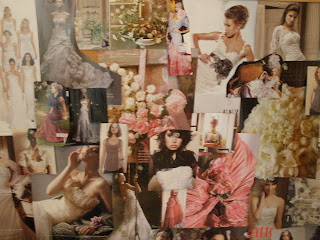Inevitably, whenever I am knitting in a group, the discussion of acrylic yarns comes up. Now there are some decent acrylics and acrylic blends out there but this discussion is usually about the "cheap" acrylics (I will not mention brands but you know what I am talking about).
Don't get me wrong, I love and would prefer knitting with good yarn. I recently made a baby blanket out of a bamboo yarn. It was wonderful to knit with and was so soft and pretty. I have splurged on merino wool, again it was great to knit with and feels wonderful.
But here's the thing, I happen to have a fair amount of that "cheap" acrylic. I have an "in" with a thrift store. They save all their yarn for me. And since I want them to continue to do so, I tend to buy whatever they have, I take the "cheap" acrylic so that when the mother load comes in, (some wonderful knitter who has gone to the big yarn store in the sky, who's clueless family would just be happy to unload her stash, choosing to fight over who's going to get the jewelry, not the yarn) they'll call me.
Now, there are many uses for this yarn - afghans (it makes very warm blankets), toys, handbags, flowers - but you wouldn't normally think to actually make a garment from it. It's kind of scratchy and has no drape. It is a little bit harder on your hands but I find working with recycled sari yarn more taxing on my joints, personally. I have had some that I just couldn't knit with so I have donated that to schools and senior centers. But for the most part, I really can't bear to part with most yarns. There is always something I can do with it - make pom-poms to decorate gifts, etc.
So I decided to do a little experimenting. I knit up 2 exact samples. One sample I just washed (in warm water with fabric softener) and dried (on the delicate cycle of my dryer). The other I killed. You heard me right, I killed it. Killing is basically ironing the fabric with steam. I put the entire weight of the iron onto the sample and steamed the bejesus out of it until it had no life left in it. Then I washed and dried it as I had done the first one.
Washing with fabric softener and drying only on the first sample did get rid of some of the stiffness and scratch. It was good to know for taking care of afghans. But it did little for the drape and it was still rough. (I wish I had feel-a-vision).

This shows the killed sample on the left and the washed only sample on the right. And in the pictures below, the killed sample (left) actually has a nice drape to it while the washed only sa

mple (right) is still fairly stiff and unwielding.
So maybe there is some hope for this "cheap" acrylic. The key would be to make a big enough gauge swatch, kill it, wash and dry it and THEN get your gauge. The killed swatch has 7 sts X 10 rows =2" and the other swatch has 8 st X 12 rows = 2" so it makes a difference.
I can definitely see the application for some casual winter sweaters.
Now excuse me while I hunt up some acrylic.
 This shows the killed sample on the left and the washed only sample on the right. And in the pictures below, the killed sample (left) actually has a nice drape to it while the washed only sa
This shows the killed sample on the left and the washed only sample on the right. And in the pictures below, the killed sample (left) actually has a nice drape to it while the washed only sa mple (right) is still fairly stiff and unwielding.
mple (right) is still fairly stiff and unwielding. 




